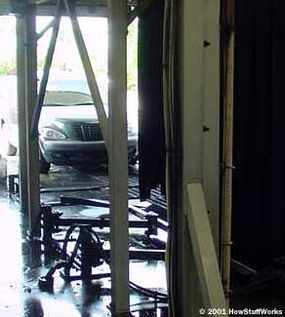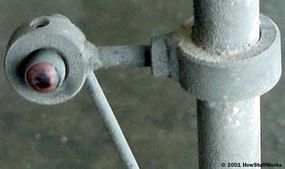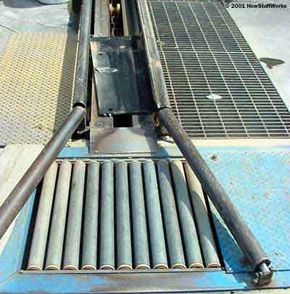Drive In
Car washes are normally either touchless or cloth friction wash. A touchless car wash relies on high-powered jets of water and strong detergents to clean the car. Only the water and cleaning solutions actually come in physical contact with the car.
Cloth friction wash systems use soft cloth that is moved around against the surface of the car. The system that we will discuss uses cloth friction wash technology, but quite a few of the same components are used in touchless car washes.
Advertisement
First, the car is placed on the conveyor track. At the beginning of the conveyor is a device called a correlator. This is simply a series of wheels or rollers that allow the wheel of the car to slide sideways until it is aligned with the conveyor.
The car is turned off and placed in neutral. Most conveyor systems have small rollers that pop up behind the wheel once it is on the conveyor. The roller pushes the wheel forward, causing the car to roll along through the tunnel, which is the term used to describe the long bay used for exterior-only and full-service systems. There are two standard types of conveyor systems:
- Front-wheel pull (FWP) - Engages the front left wheel
- Rear-wheel push (RWP) - Engages the rear left wheel

Once the car enters the tunnel, it passes through an infrared beam between two sensors, called eyes.

As soon as the beam is interrupted, the eyes send a signal to the digital control system (DCS), the computer that runs the automated portion of the car wash. By measuring the amount of time that the signal is interrupted, the DCS determines the length of the vehicle and adjusts the system accordingly.
